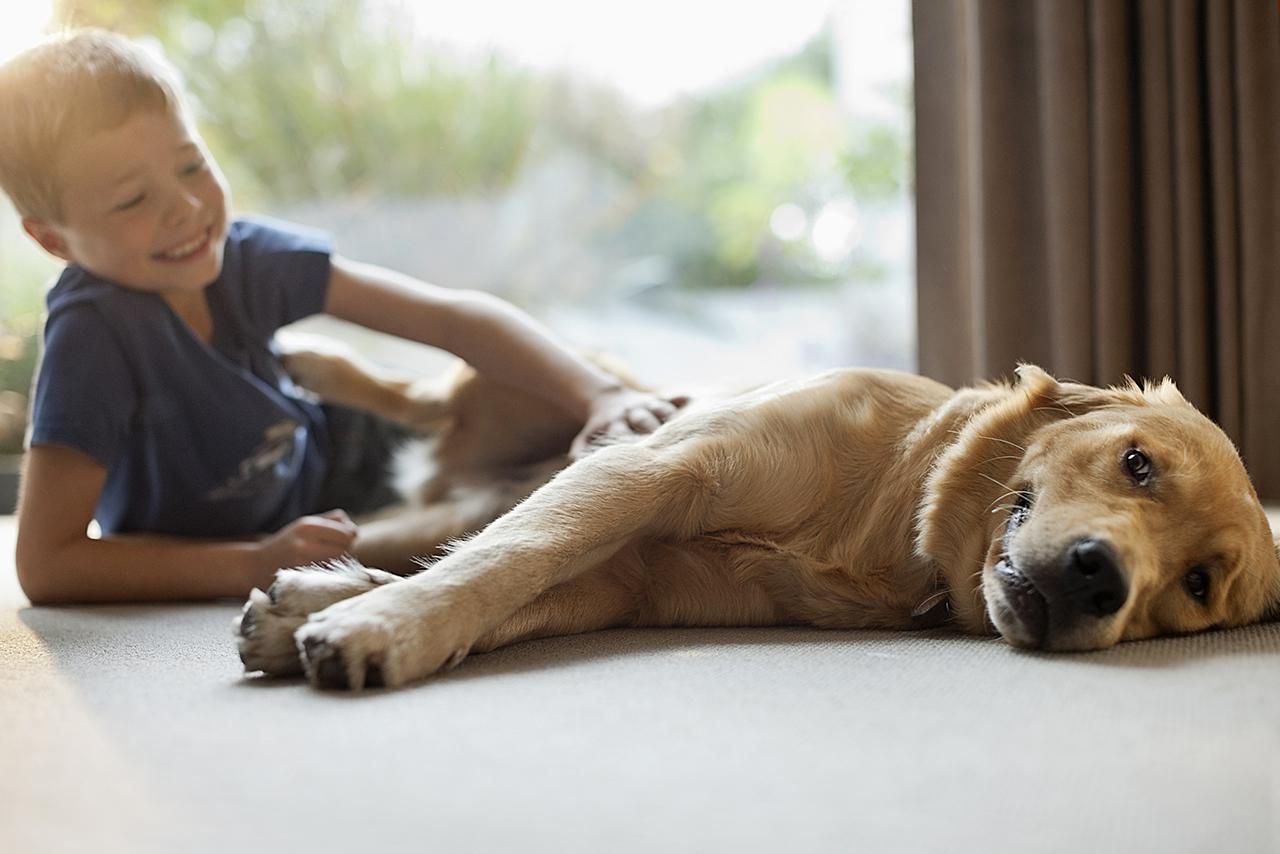Dogs are known as man’s best friend, and when children are part of the family, this extends to them as well. However, it’s crucial to ensure that your dog is not only friendly but also gentle with kids. Teaching your canine companion to be patient and well-behaved around children is essential for their safety and the overall harmony of your household. In this blog, we’ll explore a step-by-step guide on how to train your dog to be gentle with kids, promoting a happy and secure environment for both your furry friend and your little ones.
Socialization from a Young Age
The foundation for a dog’s behavior around children begins with early socialization. Expose your dog to children and their activities from a young age. Allow them to interact with kids in controlled environments. By getting your dog accustomed to children’s sounds, movements, and behaviors early on, you can reduce the likelihood of fear or anxiety when they encounter kids later in life.
Basic Obedience Training
Teaching your dog basic commands like “sit,” “stay,” “come,” and “leave it” is crucial. These commands provide you with control over your dog’s behavior, allowing you to redirect them if they become overly excited or agitated around children. Consistent obedience training will enable you to manage your dog’s reactions in different situations.
Positive Reinforcement
Positive reinforcement is a powerful tool in dog training. Reward your dog with treats, praise, and affection when they exhibit the desired gentle behavior around kids. For instance, if your dog remains calm and gentle while a child pets them, offer a treat and verbal praise. Over time, your dog will associate gentle behavior with positive outcomes, making them more likely to repeat it.
Supervised Interactions
Always supervise interactions between your dog and children. Even if you believe your dog is well-behaved, it’s essential to remain vigilant to prevent any unforeseen incidents. Be present and attentive to ensure the safety of both your dog and the child.
Desensitization to Touch
Some dogs may not be accustomed to the physical contact and unpredictable movements of children. To address this, gently desensitize your dog to touch by having children stroke and pet them. Start with short sessions and gradually increase the duration as your dog becomes more comfortable. Be sure to reward your dog for their patience during these interactions.
Boundary Training
Teaching your dog to respect boundaries is essential, especially when children are involved. Create specific areas where your dog is not allowed to enter when kids are present, such as the children’s playroom or their sleeping area. Use commands like “stay” or “leave it” to reinforce these boundaries.
Reading Dog’s Body Language
Understanding your dog’s body language is key to managing their behavior around kids. Pay attention to signs of stress or discomfort, such as tail tucking, growling, or avoiding eye contact. If you notice these signals, it’s crucial to intervene and separate your dog from the situation. This will prevent potential conflicts and ensure your dog’s well-being.
Teach Children How to Interact
Equally important is teaching children how to interact with dogs. Educate them on the dos and don’ts of approaching and petting dogs. Teach them not to disturb your dog when they are eating or resting and to approach calmly and avoid sudden movements. It’s essential that both your dog and the children understand how to interact safely with each other.
Exposure to Different Ages
It’s beneficial to expose your dog to children of different ages, as their behavior and energy levels can vary. Encourage interactions with toddlers, older children, and teenagers. This will help your dog become comfortable with kids of all ages and temperaments.
Patience and Consistency
Training your dog to be gentle with kids may take time and patience. Be consistent in your approach, and don’t expect overnight results. Dogs, like humans, learn at their own pace, and each dog is unique. Continue practicing, reinforcing good behavior, and rewarding your dog’s progress.
Seek Professional Help if Needed
In some cases, it may be necessary to seek the assistance of a professional dog trainer or behaviorist. If your dog exhibits signs of aggression or fear around children, it’s crucial to address these issues with a trained expert who can provide guidance and a tailored training plan.
Ensuring that your dog is gentle with kids is a significant responsibility, but it’s also a rewarding one. By starting early, providing consistent training, and supervising interactions, you can create a safe and harmonious environment for your children and your furry family member. Remember, a well-trained and gentle dog can be a lifelong friend and protector for your kids, offering them a loving and enduring bond that will last for years to come.
